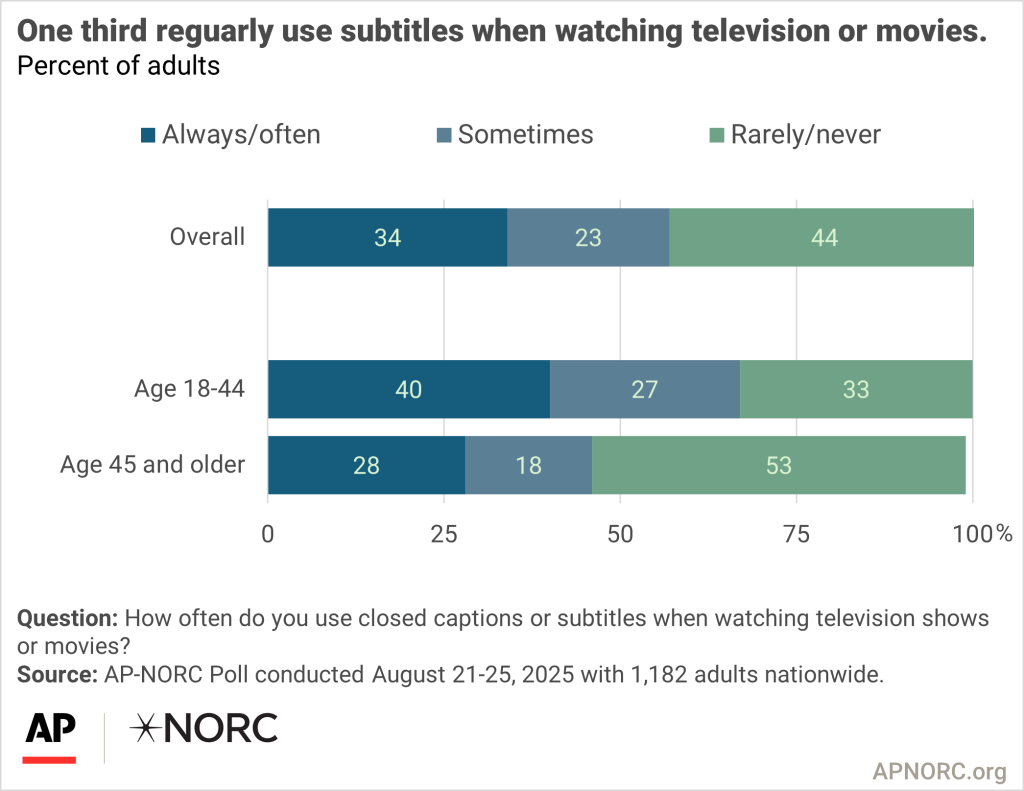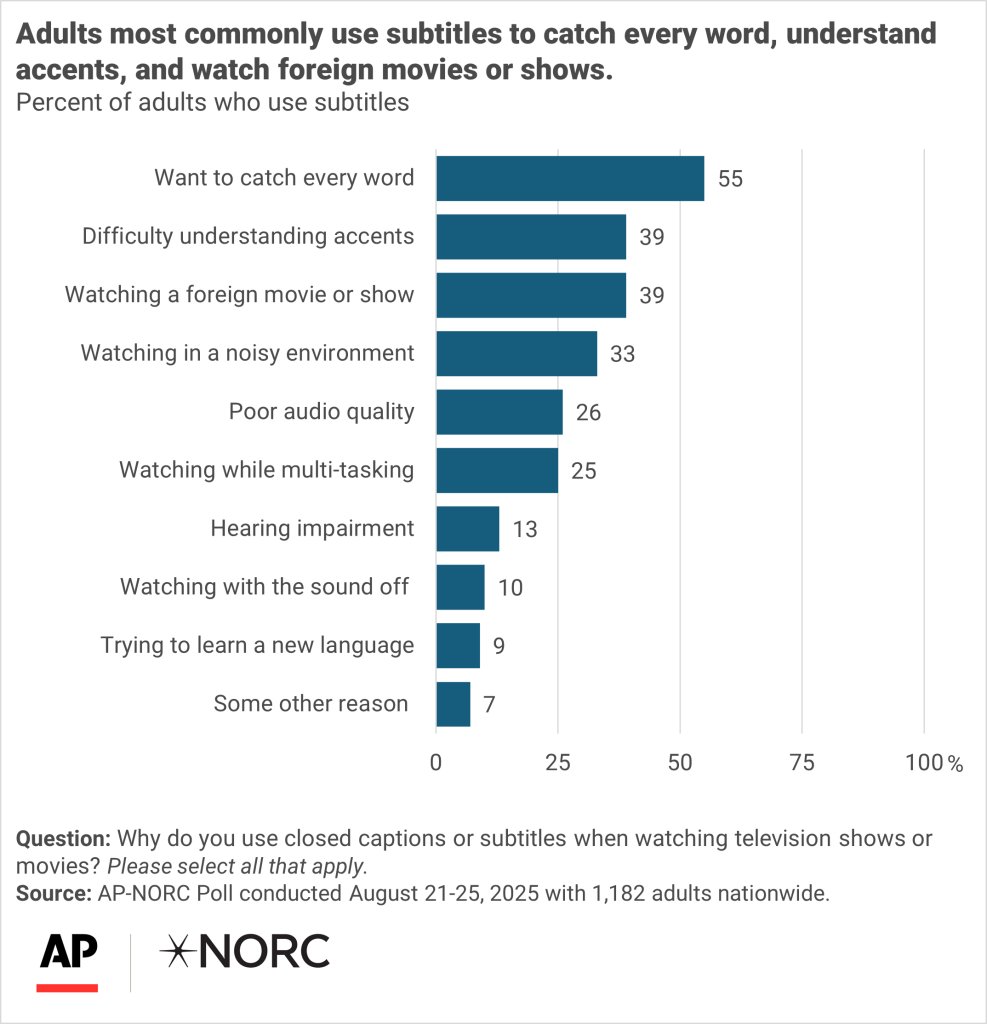
September 27, 2025
Subtitles are no longer just for those with a hearing impairment or when watching shows in a foreign language. One third of the public always or often uses subtitles when watching TV or movies. Adults under 45 are particularly likely to say they regularly watch television or movies with the captions turned on.

Half of those who use subtitles at least any amount do so because they want to catch every word, while 4 in 10 use subtitles to understand accents or watch movies and shows in another language. A third use subtitles because they are in a noisy environment and a quarter do so because of poor audio quality or because they are multi-tasking.
Older and younger adults tend to use subtitles or closed captioning for different reasons. Adults 45 and older are more likely than younger adults to use subtitles because they have difficulty understanding accents (52% vs. 28%) or because of a hearing impairment (23% vs. 4%).
Younger adults are more likely than older adults to use subtitles because they are watching in a noisy environment (40% vs. 25%) or multitasking (30% vs. 19%).

The nationwide poll was conducted August 21-25, 2025, 2025 using the AmeriSpeak® Panel, the probability-based panel of NORC at the University of Chicago. Online and telephone interviews using landlines and cell phones were conducted with 1,182 adults. The overall margin of sampling error is +/- 3.8 percentage points.
- Suggested Citation: AP-NORC Center for Public Affairs Research. “Closed captioning on? It’s a generational thing.” (August 2025). https://apnorc.org/projects/closed-captioning-on-its-a-generational-thing/





